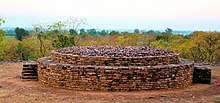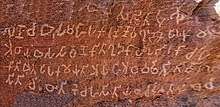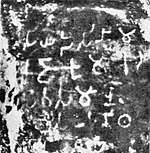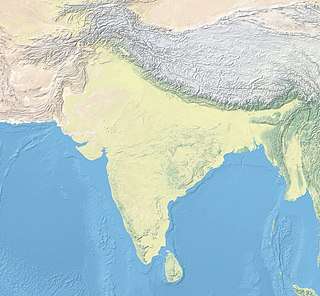Saru Maru
| Saru Maru | |
 The great stupa of Saru Maru | |
 Shown within India | |
| Coordinates | 22°43′48″N 77°31′12″E / 22.729949°N 77.519910°ECoordinates: 22°43′48″N 77°31′12″E / 22.729949°N 77.519910°E |
|---|---|
| Type | Buddhist settlement, stupas and caves |
| Satellite of | Pangoraria |
Saru Maru is the archaeological site of an ancient monastic complex and Buddhist caves. The site is located near the village of Pangoraria, Budhani Tehsil, Sehore District, Madhya Pradesh, India.[1][2] The site is about 120 km south of Sanchi.
The site contains a number of stupas as well as natural caves for monks. In the caves many Buddhist graffiti have been found (swastika, triratna, kalasa ...). In the main cave were found two inscriptions of Ashoka: a version of the Minor Rock Edict n°1, one of the Edicts of Ashoka, and another inscription mentioning the visit of Piyadasi (honorific name used by Ashoka in his inscriptions) as Maharahakumara (Prince).[1][2]
The commemorative inscriptionPiyadasi nama/ rajakumala va/ samvasamane/ imam desam papunitha/ viahara(ya)tay(e)
The king, who (now after consecration) is called "Piyadasi", (once) came to this place for a pleasure tour while still a (ruling) prince, living together with his unwedded consort.
— Commemorative Inscription of the visit of Ashoka, Saru Maru. Translated by Falk.[3]


According to the inscription, it would seem that Ashoka visited this Buddhist monastic complex while he was still a prince, and viceroy of the region of Madhya Pradesh, while his residence was to be at Vidisha [1]. In the Buddhist tradition, Ashoka's wife was called Vidishadevi, who was from Sanchi, and whom he married in Vidisha.
References
- 1 2 3 Gupta, The Origins of Indian Art, p.196
- 1 2 Archaeological Survey of India
- ↑ Allen, Charles (2012). Ashoka: The Search for India's Lost Emperor. Little, Brown Book Group. pp. 154–155. ISBN 978-1-4087-0388-5.
- ↑ Sircar, D. C. (1979). Asokan studies. Plate XVI.
External links
| Wikimedia Commons has media related to Saru Maru. |

